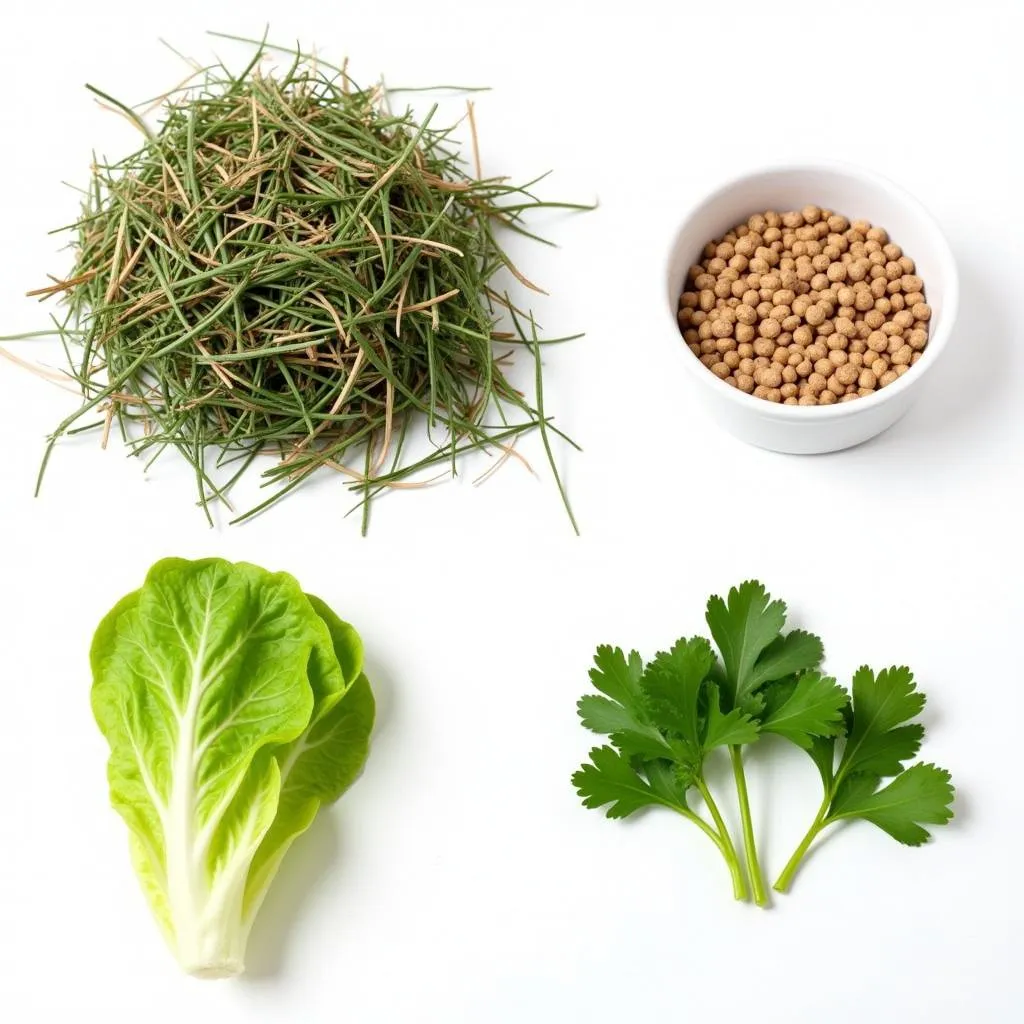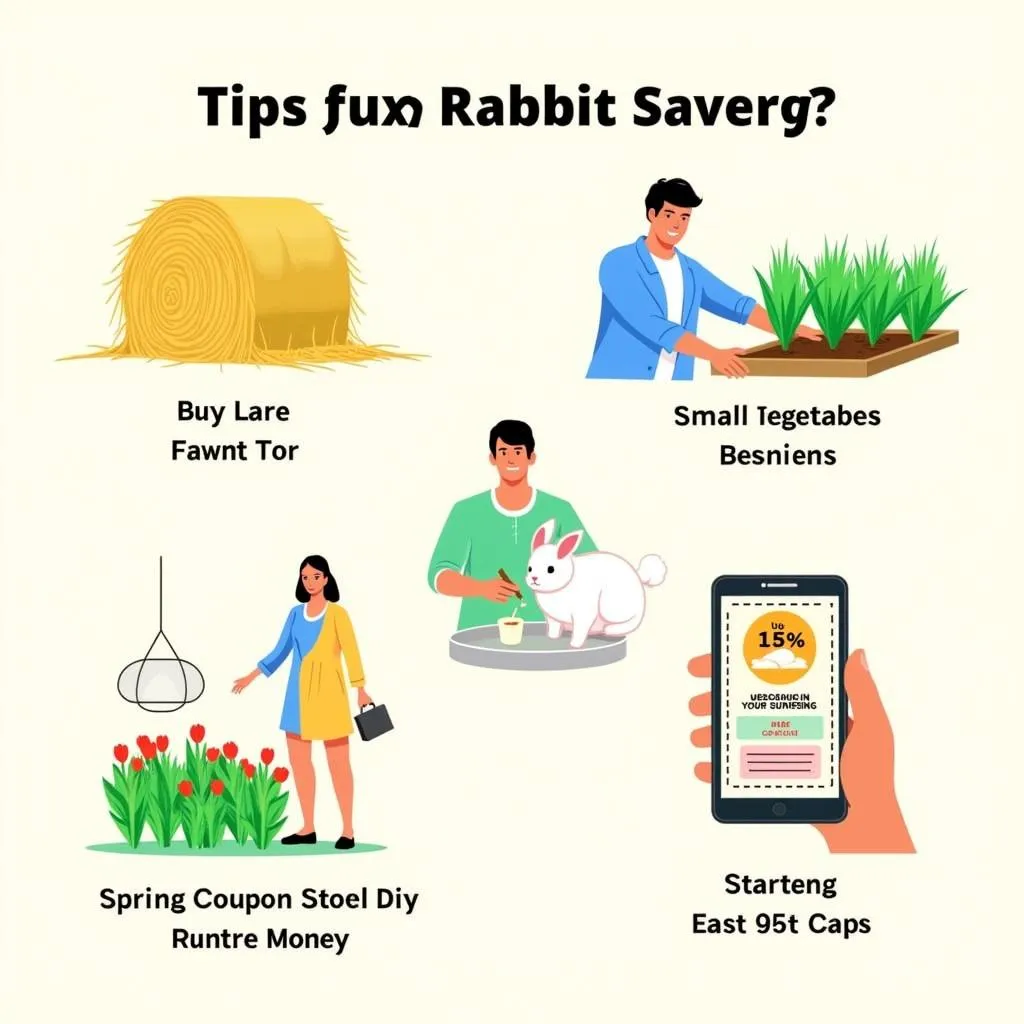Caring for a rabbit goes beyond providing cuddles and playtime. Their dietary needs are specific and essential for their overall health and happiness. If you’re considering welcoming a bunny into your family or are simply curious about the financial commitment involved in feeding them, you’re in the right place. We’ll delve into the factors that influence rabbit food costs and provide a breakdown to help you estimate your furry friend’s dietary expenses.
Factors Influencing Bunny Food Costs
Just like humans, rabbits thrive on a varied and nutritious diet. However, unlike our diverse palates, our bunny companions rely heavily on hay, fresh vegetables, and a measured amount of pellets. Let’s explore the elements that impact the cost of feeding your rabbit:
1. Type of Food:
- Hay: The cornerstone of a rabbit’s diet, hay should make up the majority of their daily intake. The cost of hay varies depending on the type (Timothy, Orchard, Alfalfa), quality, and purchasing method (bale, bag).
- Pellets: These provide essential vitamins and minerals. The price depends on the brand, ingredients, and pellet size.
- Fresh Vegetables: Variety is key! The cost of vegetables fluctuates seasonally but offering a mix of leafy greens and other rabbit-safe veggies is crucial.
2. Quantity:
The amount of food your rabbit needs depends on its age, size, and activity level. A larger, more active rabbit will naturally consume more, influencing the overall cost.
3. Brand and Quality:
Just like any other product, higher quality rabbit food brands often come at a higher price. Premium brands may use organic ingredients or offer specialized formulas for different life stages.
4. Purchasing Method:
Buying hay in bulk, such as a large bale, can often be more cost-effective than purchasing smaller bags. Similarly, opting for larger bags of pellets might offer a lower price per pound.
 Variety of rabbit food – hay, pellets, fresh vegetables
Variety of rabbit food – hay, pellets, fresh vegetables
Breaking Down the Costs
Providing an exact cost for rabbit food is challenging due to the variables mentioned above. However, we can provide estimated ranges to give you a general idea:
- Hay: $10 – $30 per month. This cost can be lower if you purchase hay in bulk.
- Pellets: $5 – $20 per month. The price varies based on brand and quantity purchased.
- Fresh Vegetables: $10 – $20 per month. Seasonal availability and your chosen variety will impact the cost.
Based on these estimates, you can expect to spend approximately $25 – $70 per month on food for your rabbit.
Tips for Managing Rabbit Food Costs
- Buy Hay in Bulk: If you have storage space, purchasing hay in bulk is an excellent way to save money in the long run.
- Consider Growing Your Own Vegetables: If you have a green thumb, growing your own rabbit-safe vegetables can be both cost-effective and rewarding.
- Look for Deals and Discounts: Keep an eye out for sales at your local pet stores or online retailers.
 Tips for managing rabbit food costs
Tips for managing rabbit food costs
FAQs about Rabbit Food Costs
Q: Is it cheaper to feed a rabbit hay or pellets?
A: Hay should be the primary component of a rabbit’s diet. It is generally more affordable than pellets and essential for their digestive health.
Q: Can I feed my rabbit human food to save money?
A: While some human foods are safe for rabbits in moderation, it’s crucial to stick to a diet primarily composed of hay, pellets, and fresh vegetables.
Q: Do baby rabbits need different food than adult rabbits?
A: Yes, young rabbits have different nutritional needs. Consult with your veterinarian about the appropriate diet for your rabbit’s age.
More Helpful Resources
For further insights into providing the best care for your rabbit, explore these valuable resources:
Need More Help?
Have more questions about how much bunny food is or other rabbit care concerns? We are here to help! Contact our dedicated team at Phone Number: 02437655121, Email: [email protected], or visit us at 3PGH+8R9, ĐT70A, thôn Trung, Bắc Từ Liêm, Hà Nội, Việt Nam. Our customer support is available 24/7 to assist you with all your bunny-related needs!